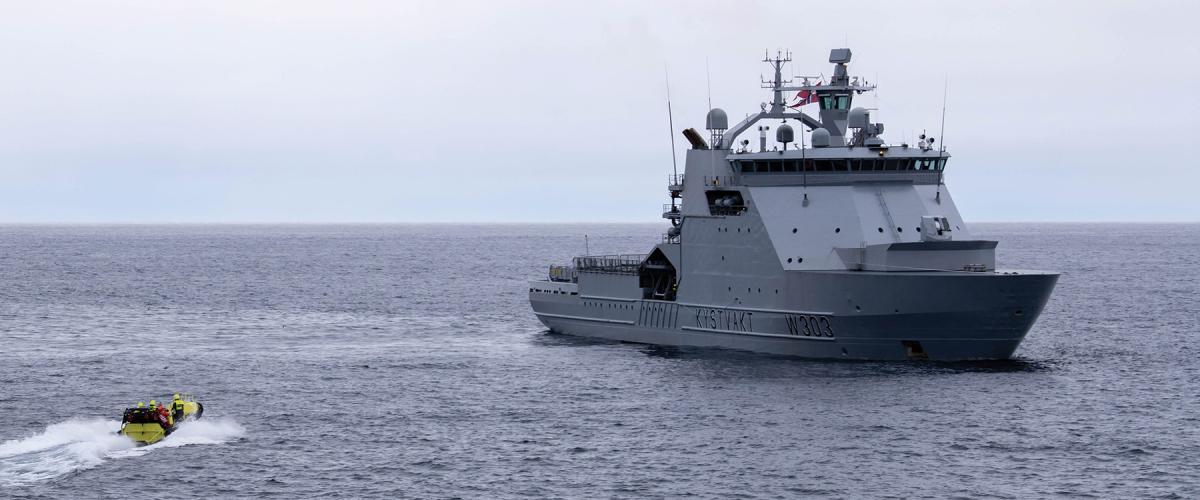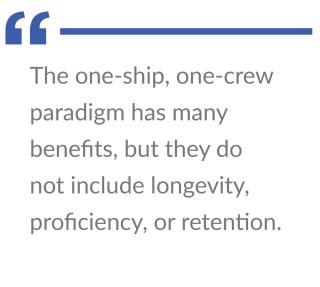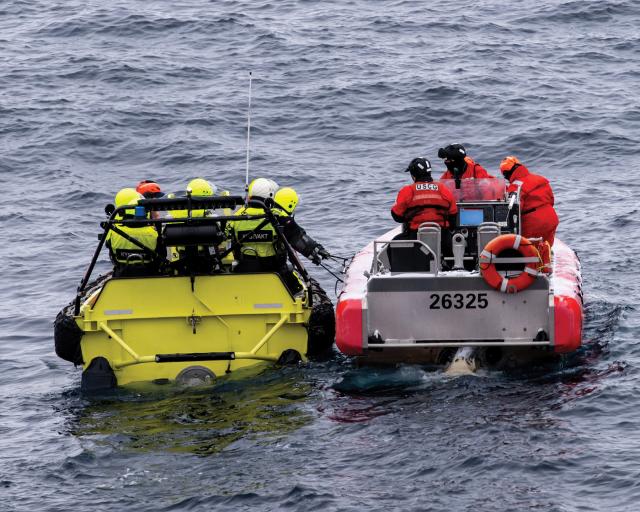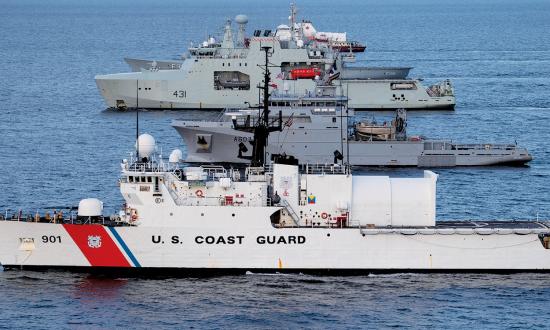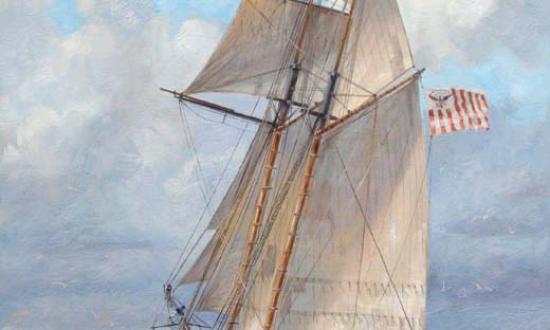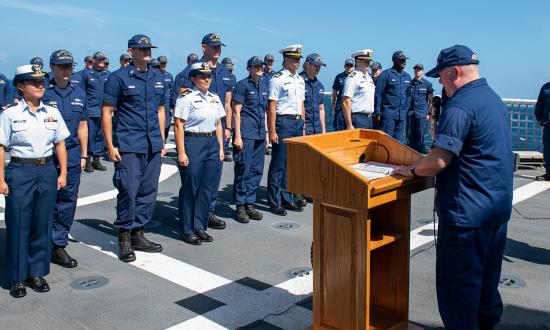More than eight years ago, then–Lieutenant Commander Brian Smicklas predicted the “demise of the cutterman.”1 Since then, the Coast Guard has made some progress incentivizing service at sea with increased sea pay, more opportunities for women afloat, and slightly easier pathways for professional licensing applicable outside the service. Yet, the continued existence of bonuses designed to entice officers to fill billets on cutters suggests an ongoing problem. Even Commandant Admiral Linda Fagan acknowledged such bonuses are just “Band-Aids.”2
The future arrival of the new offshore patrol cutters and polar security cutters foretells an excellent time to be a cutterman. Adding these ships to the fleet indicates a service committed to at-sea missions. However, buying ships is one issue. Recruiting, retaining, and rewarding the crews who operate them is quite another, especially considering an expected 25 percent increase in demand for afloat personnel.3 Luckily, proven solutions exist. The Coast Guard could learn from one of its allies.
The Norwegian Approach
The Norwegian Coast Guard (NCG) is considerably smaller than the U.S. Coast Guard and has fewer statutory missions; however, it also has no shortage of officers serving on board its ships. In fact, the NCG is sometimes challenged to fill billets ashore. This shipboard success is built on a different personnel management model.
In short, the NCG dual crews each ship following a predictable schedule. While this model has been disparaged by some, with the right support and culture shift, the core concept has been successful.4
The NCG supports the dual-crew structure with robust training and maintenance, a healthy work-life balance, and pay incentives. Two full workdays are set aside for crew turnover and joint maintenance activities, and the crews work together to ready the ship for the next patrol. After being relieved, the offgoing crew supports staff functions, attends training courses, or can use “banked” time to return home until the next patrol.
The NCG also rotates personnel less frequently. Officer tours are commonly between three and five years, after which the officer will fleet up on the same ship or rotate to a different one. Over the course of a 25-year career, an officer can be assigned to a ship for roughly 20 years. The goal is to build competent, proficient, and professional operators.
The Norwegian military, including the NCG, allows personnel to live permanently anywhere in the country. Service members are entitled to a set amount of round-trip airfare for travel between their duty stations and homes. Finally, the NCG provides pay and incentives that average nearly twice what its shoreside counterparts receive.
The U.S. Coast Guard should take note of the NCG’s success retaining officers within its afloat operations.
Countering the Critics
Despite open acknowledgment of Coast Guard recruitment and retention issues, the status quo can be difficult to change. Following are three predictable arguments against taking action:
There is no comparison, because the Norwegian Coast Guard is much smaller and has fewer missions. This is a matter of scope and scale. Comparison is possible between similar missions. For example, a dual-crewed NCG patrol boat can be at sea conducting law enforcement, fisheries protection, and search-and-rescue missions approximately 50 percent longer than a single-crewed U.S. Coast Guard patrol boat. In a boat-to-boat, mission-to-mission comparison, the NCG approach provides more value.
We tried the dual-crew structure and it did not work. This presumes the National Security Cutter Crew Rotation Concept (CRC) was actually implemented and lessons captured. However, the CRC never made it off the drawing board.5 Long-standing experience at Patrol Forces Southwest Asia indicates a relief crew concept can be successful. While not a dual-crew situation, the relief crew organizational structure should not be ignored when considering solutions for cutter crews.
It will cost too much. Crew rotation concepts can save money in the long run compared with the traditional one-crew, one-ship paradigm.The conundrum for the Coast Guard is finding the funding to make operational investments in the short term to achieve savings over the long term.
The cost argument also discounts the potential for the second- and third-order savings that can result from routine permanent stationing. Family stability in a chosen community can have an outsized impact on reducing overall costs to service members and the Coast Guard at large. This can be a complicated calculation, and it may prove difficult to predict such outcomes. However, difficulty should not preclude a serious investigation of both quantitative and qualitative data.
Tomorrow Looks Different
The one-ship, one-crew paradigm has many benefits, but they do not include longevity, proficiency, or retention. If these benefits were part of the current paradigm, bonuses for afloat officers likely would not be necessary. To avoid losing experienced officers’ knowledge and proficiency, the U.S. Coast Guard should establish stable, predictable, rewarding afloat career tracks, much as the Norwegian Coast Guard has done.
It is time to recognize, as Admiral Fagan has said, “Tomorrow looks different, and so will we.”
1. LCDR Brian Smicklas, USCG, “The Demise of the Cutterman,” U.S. Naval Institute Proceedings 141, no. 8 (August 2015).
2. Caitlin Yilek, Norah O’Donnell, and Angel Canales, “How the Coast Guard Plans to Boost Recruitment after Years of Shortfalls,” CBS Evening News, 7 December 2022.
3. LT Joseph O’Connell, USCG, “Gapped Billet Squall on the Horizon: The USCG Officer Corps Could Be in Trouble,” CIMSEC, 25 April 2023.
4. See CAPT John Cordle, USN (Ret.), “Good Riddance to Rotational Crews,” U.S. Naval Institute Proceedings 143, no. 6 (June 2017); and LCDR Steven Wills, USN (Ret.), “Rotational Crews Catch on Among Close U.S. Allies,” CNA.org, 5 August 2019.
5. See Government Accountability Office, Coast Guard: Timely Actions Needed to Address Risks in Using Rotational Crews, GAO-15-195 (Washington, DC: Government Accountability Office, March 2015); and Ronald O’Rourke, Coast Guard Cutter Procurement: Background and Issues for Congress (Washington, DC: Congressional Research Service, 22 December 2022).



